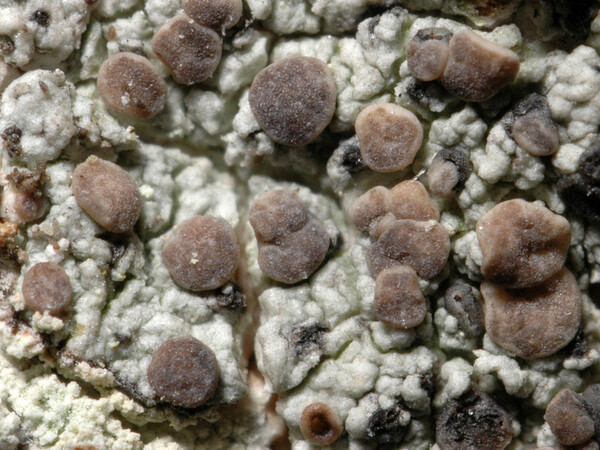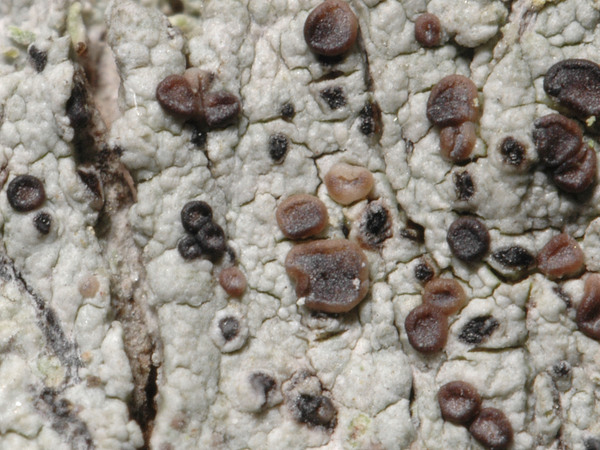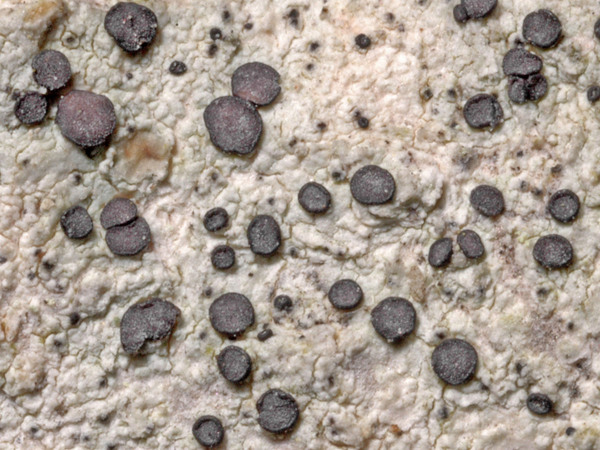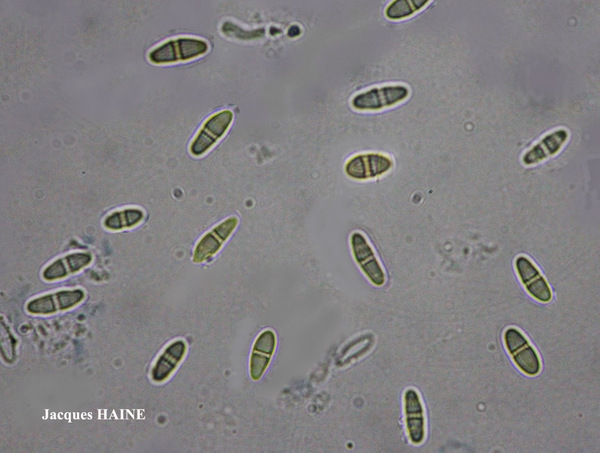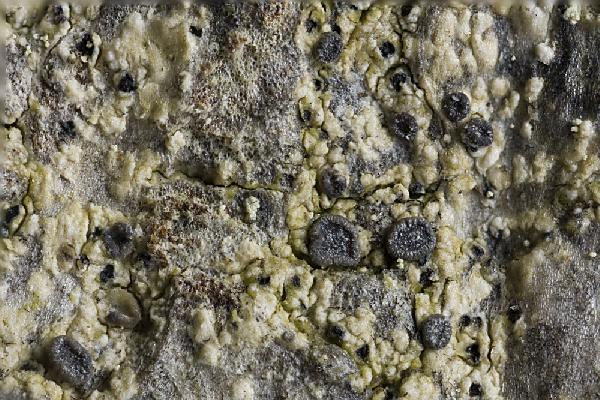Cliostomum griffithii (Sm.) Coppins
in Hawksworth & al., Lichenologist, 12: 106, 1980. Basionym: Lichen griffithii Sm. - Engl. Bot., 25: pl. 1735, 1807.
Synonyms: Bacidia imitatrix Malme; Biatora anomala (Ach.) Fr.; Biatora mixta Fr.; Biatorina griffithii (Sm.) A. Massal.; Biatorina mixta (Fr.) Hellb.; Biatorina tricolor auct.; Catillaria griffithii (Sm.) H. Magn.; Catillaria tricolor auct. non (With.) Th. Fr.; Lecidea anomala Ach.; Lecidea tricolor sensu Nyl.
Distribution: N - Frl, Ven, Lomb, Emil (Fariselli & al. 2020), Lig. C - Tosc, Laz, Abr, Sar (Zedda 2002, Rizzi & al. 2011, Cossu 2013, Di Nuzzo & al. 2022). S - Camp (Nimis & Tretiach 2004), Bas (Puntillo & al. 2012), Cal (Puntillo 1995, 1996), Si (Nimis & al. 1994).
Description: Thallus crustose, episubstratic, continuous or rimose, pale greenish grey to bluish grey, smooth or warted, with a more or less well-developed phenocortex covered with an epinecral layer. Apothecia biatorine, 0.2-0.8(-1.7) mm across, with a concave to finally slightly convex, pale yellow, pale pink, violet grey to pure black, often mottled, epruinose or thinly white-pruinose disc, and a concolorous or paler, raised to finally excluded proper margin. Proper exciple of radially arranged hyphae, 30-50 µm wide laterally, pale brown to black-brown and K+ violet in outer and upper parts, colourless or pale yellow within, with small crystals soluble in K; epithecium colourless or yellowish brown, with small crystals soluble in K, the pigmented parts K+ violet; hymenium colourless, 45-60 µm high, I+ blue; paraphyses mostly simple, c. 1.5 µm thick at base, the apical cells more or less clavate, 2-4 µm wide; hypothecium colourless or pale yellow. Asci 8-spored, cylindrical-clavate, the tholus with a conical, blunt, sometimes indistinct ocular chamber and a distinctly conical axial body, the remainder of tholus I+ dark blue, darkest around the axial body. Ascospores 1(-3)-septate. hyaline, narrowly ellipsoid or oblong, straight or slightly curved, 8-16 x 2.5-3.5(-4) µm. Pycnidia immersed or almost sessile, black, 0.1-0.2(-0.3) mm across, smooth, often widely gaping and irregularly shaped, sometimes becoming multilocular, the wall with a brown, K+ purplish pigment. Conidia 1-celled, drop-shaped to bacilliform, 3-5 x 1.3-2 µm. Photobiont chlorococcoid. Spot tests: thallus K+ pale yellow, C-, KC-, P+ pale yellow. Chemistry: thallus with atranorin, chloroatranorin, roccellic acid, sometimes caperatic acid, and unidentified fatty acids; apothecia with traces of usnic acid.
Note: a mild-temperate species with a fragmented holarctic range, found on bark of old isolated trees in open, humid woodlands, rarely on lignum; probably ore widespread in the past, presently mostly Tyrrhenian. The epithet griffithii (sometimes spelled grippithii) was often used by XIX century Italian authors to designate Lecania cyrtella s.lat. (e.g. see Anzi 1860: 73). The record from Piemonte by Isocrono & Falletti (1999) needs confirmation, and is not accepted here. It is included in the Italian red list of epiphytic lichens as “Near-threatened” (Nascimbene & al. 2013c).
Growth form: Crustose
Substrata: bark
Photobiont: green algae other than Trentepohlia
Reproductive strategy: mainly sexual
Most common in areas with a humid-warm climate (e.g. most of Tyrrenian Italy)
Commonnes-rarity: (info)
Alpine belt: absent
Subalpine belt: absent
Oromediterranean belt: absent
Montane belt: absent
Submediterranean belt: extremely rare
Padanian area: absent
Humid submediterranean belt: extremely rare
Humid mediterranean belt: extremely rare
Dry mediterranean belt: absent

Predictive model
Herbarium samples
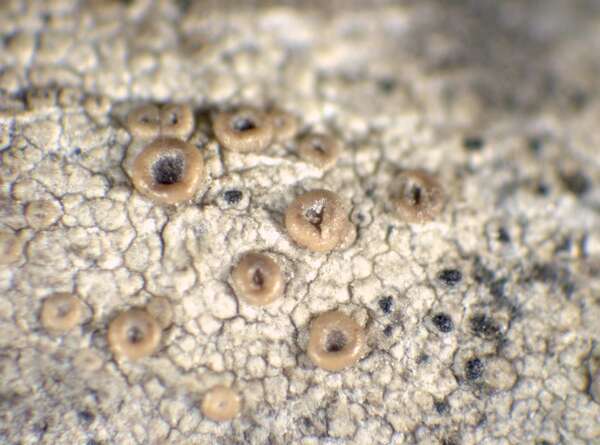

P.L. Nimis; Owner: Department of Life Sciences, University of Trieste
Herbarium: TSB (10805)
2001/12/09
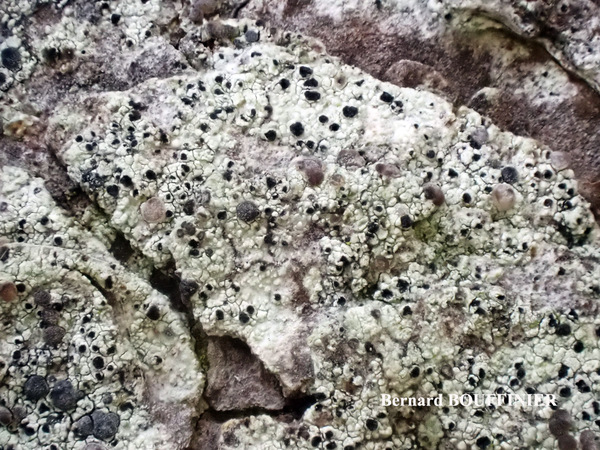
Bernard Bouffinier - Source: http://www.lichensmaritimes.org/index.php?task=fiche&lichen=644&lang=en
France, Crozon
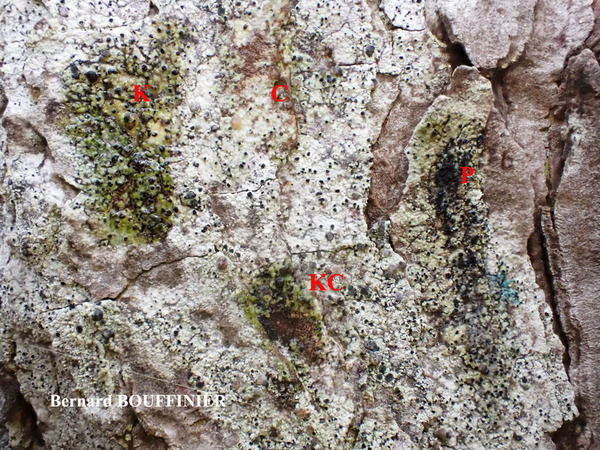
Bernard Bouffinier - Source: http://www.lichensmaritimes.org/index.php?task=fiche&lichen=644&lang=en
France, Crozon
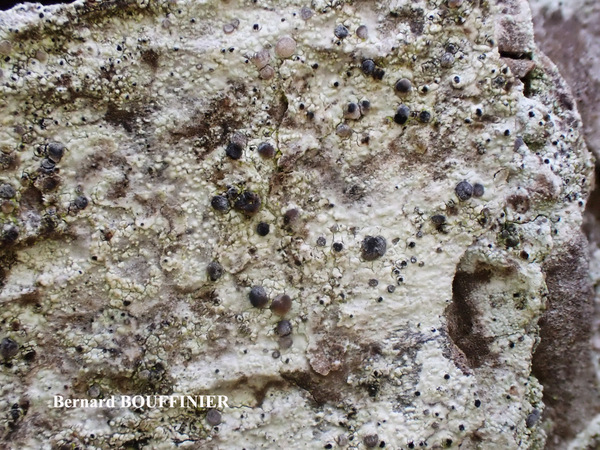
Bernard Bouffinier - Source: http://www.lichensmaritimes.org/index.php?task=fiche&lichen=644&lang=en
France, Crozon

Bernard Bouffinier - Source: http://www.lichensmaritimes.org/index.php?task=fiche&lichen=644&lang=en
France, Crozon
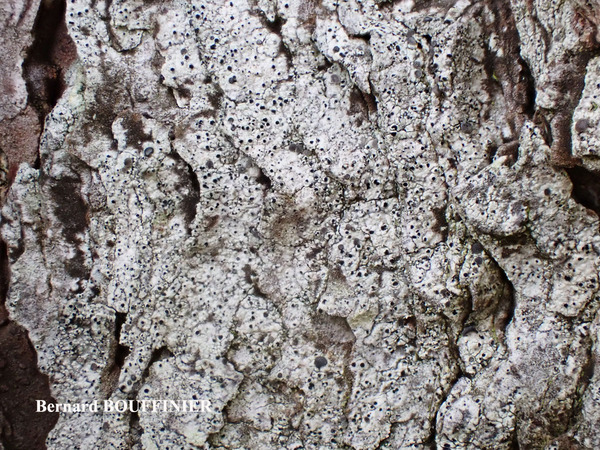
Bernard Bouffinier - Source: http://www.lichensmaritimes.org/index.php?task=fiche&lichen=644&lang=en
France, Crozon
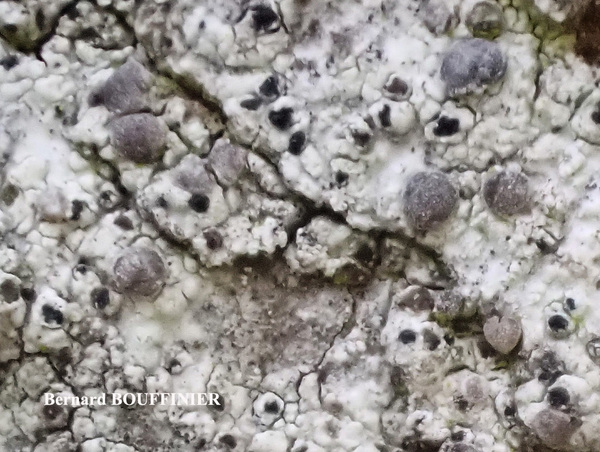
Bernard Bouffinier - Source: http://www.lichensmaritimes.org/index.php?task=fiche&lichen=644&lang=en
France, Crozon
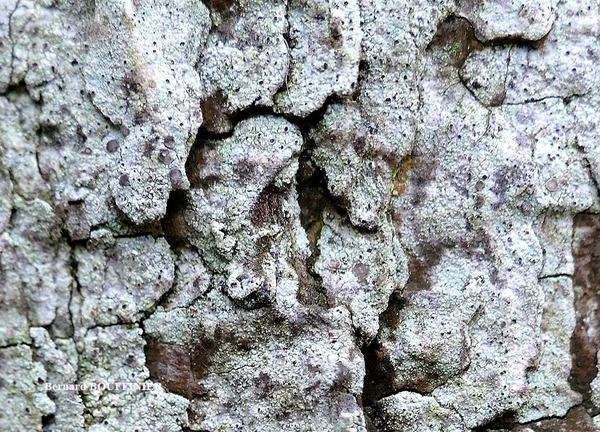
Bernard Bouffinier - Source: http://www.lichensmaritimes.org/index.php?task=fiche&lichen=644&lang=en
France, Concarneau
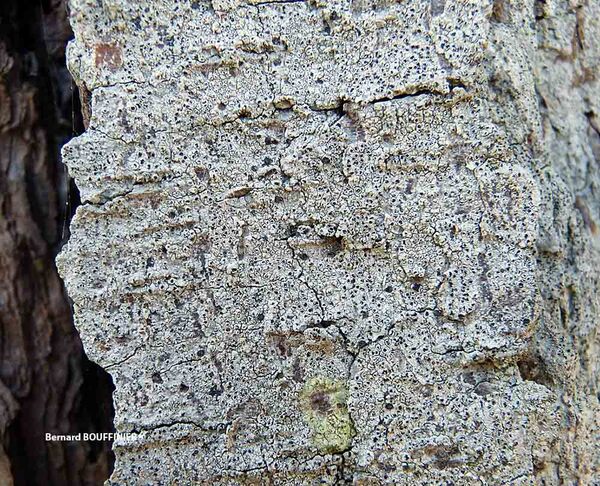
Bernard Bouffinier - Source: http://www.lichensmaritimes.org/index.php?task=fiche&lichen=644&lang=en
France, Beg Meil

Bernard Bouffinier - Source: http://www.lichensmaritimes.org/index.php?task=fiche&lichen=644&lang=en
France, La Palue
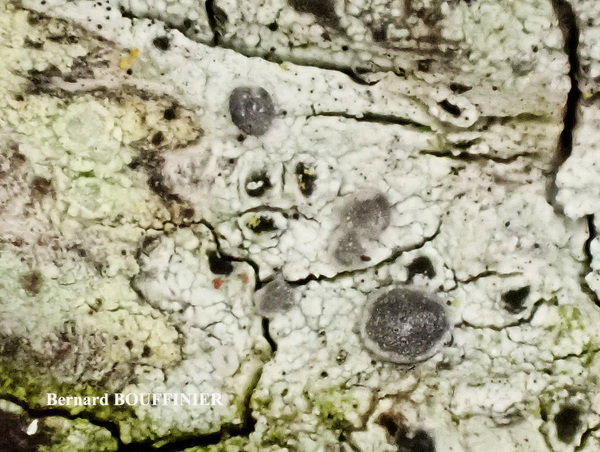
Bernard Bouffinier - Source: http://www.lichensmaritimes.org/index.php?task=fiche&lichen=644&lang=en
France, Roscanvel
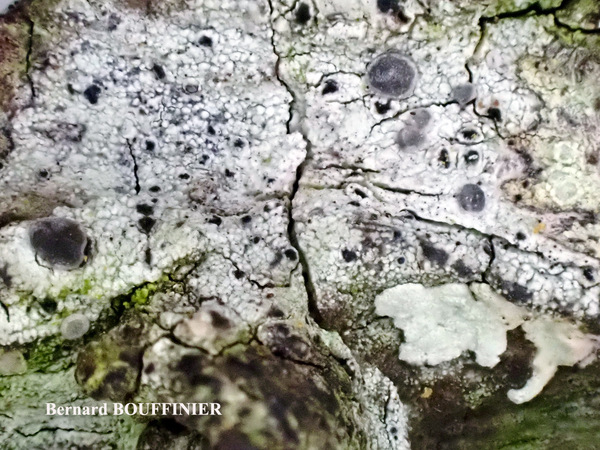
Bernard Bouffinier - Source: http://www.lichensmaritimes.org/index.php?task=fiche&lichen=644&lang=en
France, La Palue, sur Tamarix
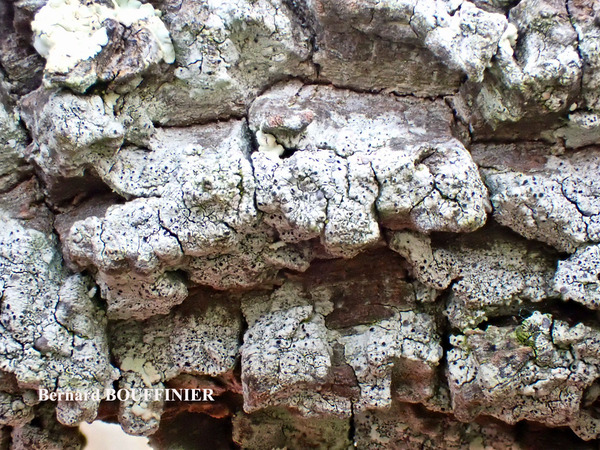
Bernard Bouffinier - Source: http://www.lichensmaritimes.org/index.php?task=fiche&lichen=644&lang=en
France, La Palue, sur Tamarix
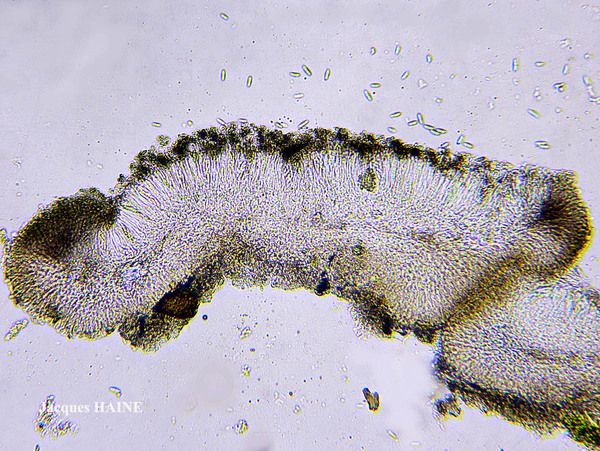
Jacques Haine - Source: http://www.lichensmaritimes.org/index.php?task=fiche&lichen=644&lang=en
France, Roscanvel
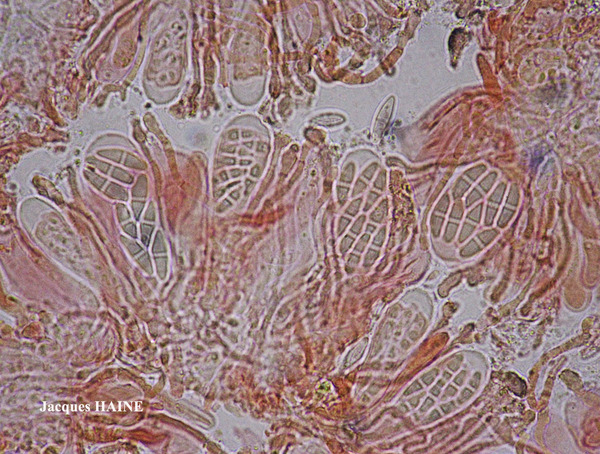
Jacques Haine - Source: http://www.lichensmaritimes.org/index.php?task=fiche&lichen=644&lang=en
France, Roscanvel
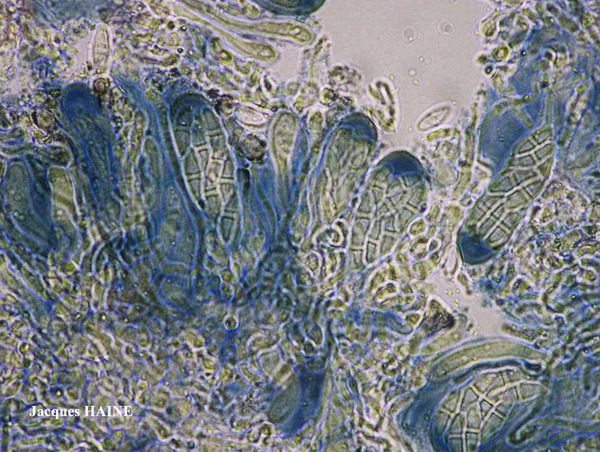
Jacques Haine - Source: http://www.lichensmaritimes.org/index.php?task=fiche&lichen=644&lang=en
France, Roscanvel
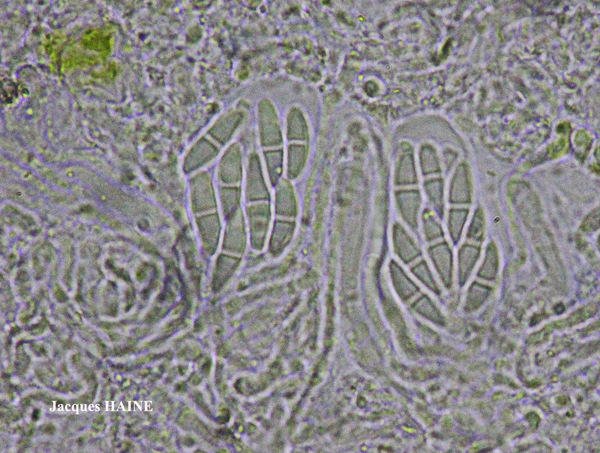
Jacques Haine - Source: http://www.lichensmaritimes.org/index.php?task=fiche&lichen=644&lang=en
France, Roscanvel
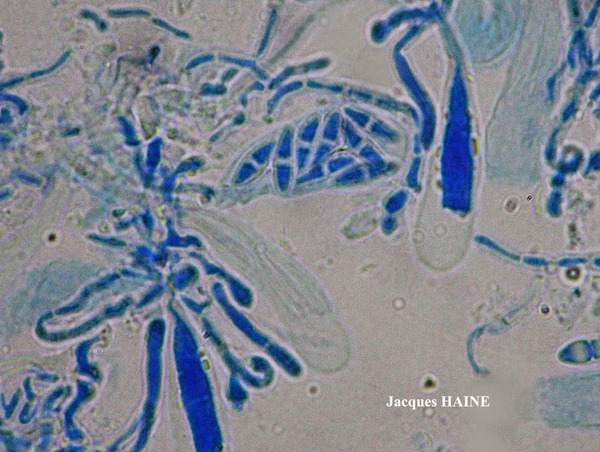
Jacques Haine - Source: http://www.lichensmaritimes.org/index.php?task=fiche&lichen=644&lang=en
France, Crozon
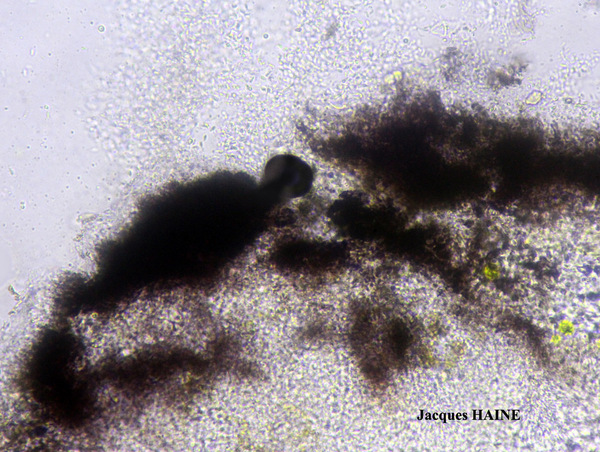
Jacques Haine - Source: http://www.lichensmaritimes.org/index.php?task=fiche&lichen=644&lang=en
France, Crozon
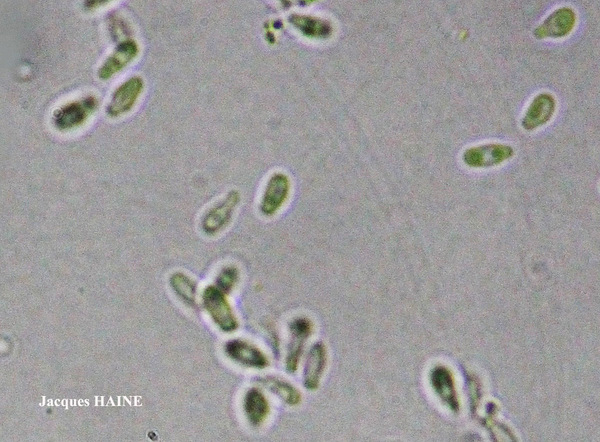
Jacques Haine - Source: http://www.lichensmaritimes.org/index.php?task=fiche&lichen=644&lang=en
France, Crozon
pycnidiospores
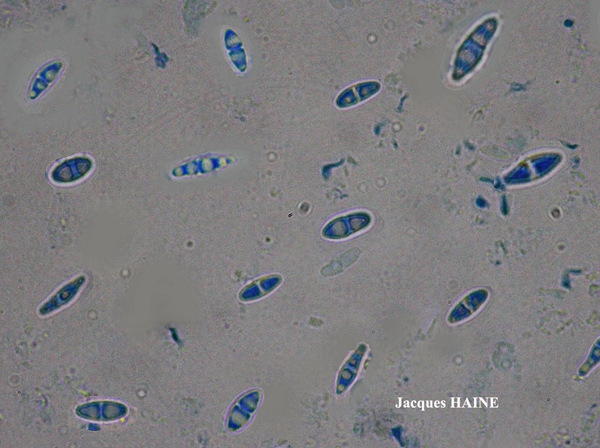
Jacques Haine - Source: http://www.lichensmaritimes.org/index.php?task=fiche&lichen=644&lang=en
France, Crozon
spores

Jacques Haine - Source: http://www.lichensmaritimes.org/index.php?task=fiche&lichen=644&lang=en
France, Crozon
spores
Growth form: Crustose
Substrata: bark
Photobiont: green algae other than Trentepohlia
Reproductive strategy: mainly sexual
Most common in areas with a humid-warm climate (e.g. most of Tyrrenian Italy)
Commonnes-rarity: (info)
Alpine belt: absent
Subalpine belt: absent
Oromediterranean belt: absent
Montane belt: absent
Submediterranean belt: extremely rare
Padanian area: absent
Humid submediterranean belt: extremely rare
Humid mediterranean belt: extremely rare
Dry mediterranean belt: absent

Predictive model
| Herbarium samples |


P.L. Nimis; Owner: Department of Life Sciences, University of Trieste
Herbarium: TSB (10805)
2001/12/09

Bernard Bouffinier - Source: http://www.lichensmaritimes.org/index.php?task=fiche&lichen=644&lang=en
France, Crozon

Bernard Bouffinier - Source: http://www.lichensmaritimes.org/index.php?task=fiche&lichen=644&lang=en
France, Crozon

Bernard Bouffinier - Source: http://www.lichensmaritimes.org/index.php?task=fiche&lichen=644&lang=en
France, Crozon

Bernard Bouffinier - Source: http://www.lichensmaritimes.org/index.php?task=fiche&lichen=644&lang=en
France, Crozon

Bernard Bouffinier - Source: http://www.lichensmaritimes.org/index.php?task=fiche&lichen=644&lang=en
France, Crozon

Bernard Bouffinier - Source: http://www.lichensmaritimes.org/index.php?task=fiche&lichen=644&lang=en
France, Crozon

Bernard Bouffinier - Source: http://www.lichensmaritimes.org/index.php?task=fiche&lichen=644&lang=en
France, Concarneau

Bernard Bouffinier - Source: http://www.lichensmaritimes.org/index.php?task=fiche&lichen=644&lang=en
France, Beg Meil

Bernard Bouffinier - Source: http://www.lichensmaritimes.org/index.php?task=fiche&lichen=644&lang=en
France, La Palue

Bernard Bouffinier - Source: http://www.lichensmaritimes.org/index.php?task=fiche&lichen=644&lang=en
France, Roscanvel

Bernard Bouffinier - Source: http://www.lichensmaritimes.org/index.php?task=fiche&lichen=644&lang=en
France, La Palue, sur Tamarix

Bernard Bouffinier - Source: http://www.lichensmaritimes.org/index.php?task=fiche&lichen=644&lang=en
France, La Palue, sur Tamarix

Jacques Haine - Source: http://www.lichensmaritimes.org/index.php?task=fiche&lichen=644&lang=en
France, Roscanvel

Jacques Haine - Source: http://www.lichensmaritimes.org/index.php?task=fiche&lichen=644&lang=en
France, Roscanvel

Jacques Haine - Source: http://www.lichensmaritimes.org/index.php?task=fiche&lichen=644&lang=en
France, Roscanvel

Jacques Haine - Source: http://www.lichensmaritimes.org/index.php?task=fiche&lichen=644&lang=en
France, Roscanvel

Jacques Haine - Source: http://www.lichensmaritimes.org/index.php?task=fiche&lichen=644&lang=en
France, Crozon

Jacques Haine - Source: http://www.lichensmaritimes.org/index.php?task=fiche&lichen=644&lang=en
France, Crozon

Jacques Haine - Source: http://www.lichensmaritimes.org/index.php?task=fiche&lichen=644&lang=en
France, Crozon
pycnidiospores

Jacques Haine - Source: http://www.lichensmaritimes.org/index.php?task=fiche&lichen=644&lang=en
France, Crozon
spores

 INDEX FUNGORUM
INDEX FUNGORUM
 GBIF
GBIF
 DOLICHENS
DOLICHENS
